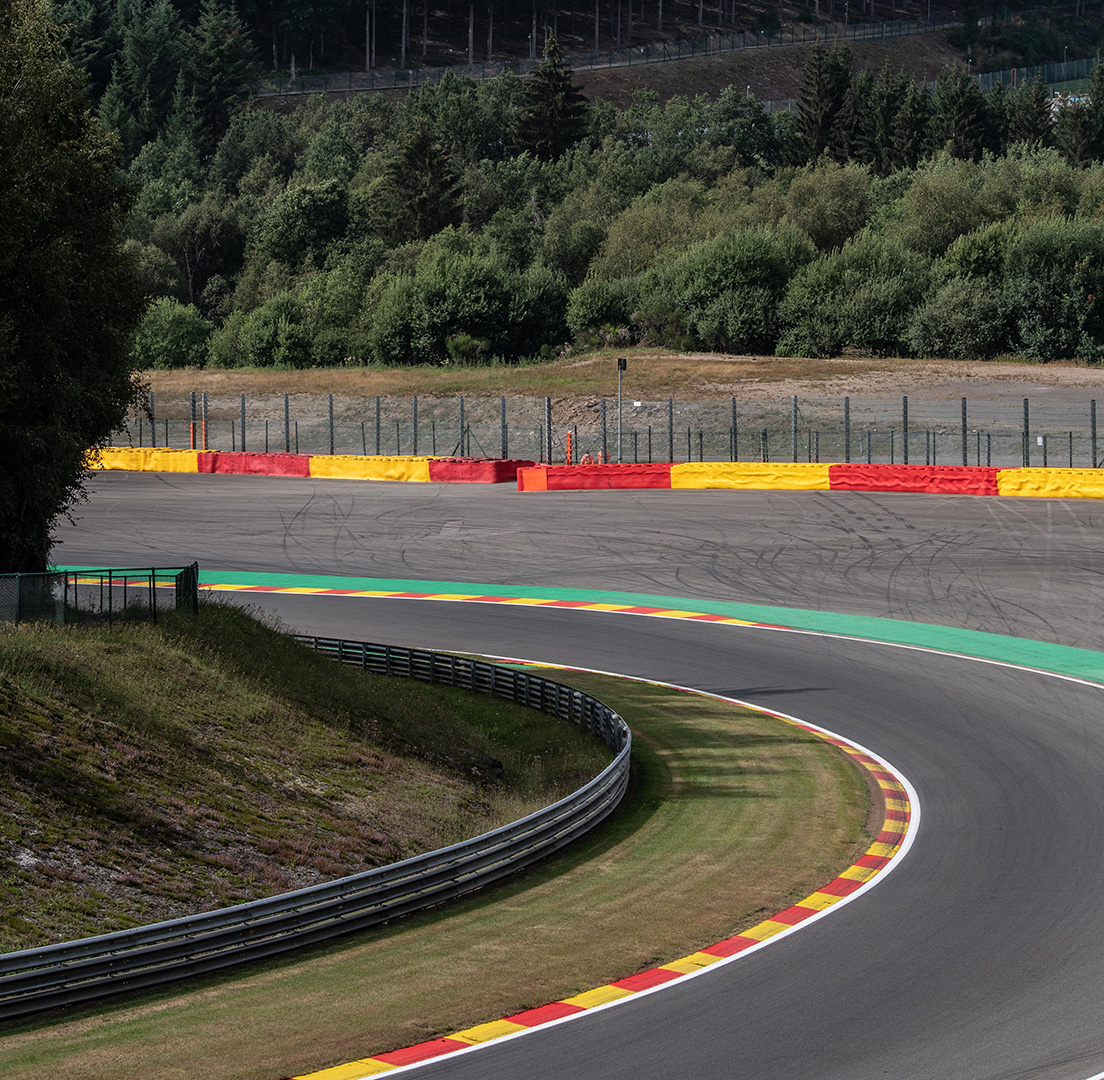
Ferrari Hypercar
6 Hours of Spa-Francorchamps

Spa-Francorchamps Circuit

Indeed, the track immersed in the green of the Ardennes still has nearly all the technical characteristics of the original circuit (which was about 14 kilometres long), making it exciting from first to last from the technical point of view. It is full of technical aspects that can bring out differences between drivers. The fans' pulses quicken when the cars pass by the Eau Rouge or Radillon, and nerves fray when a driver goes at full tilt (or not) into this fearsome dip.
Of course, drivers don't only set their best times courtesy of the Eau Rouge and Radillon. The central part of Spa is very interesting, with its sequence of fast curves interspersed with short straights. This second stage is perhaps the most technical, with the driver needing to take a very particular approach so as not to spin out. After the mixed section, at the exit of the treacherous Stavelot, the drivers go back in time to the evocative straight in the Ardennes forest, the Blanchimont, which leads to the final turn, the Bus Stop.
However, the Belgian circuit is also famous for its very changeable weather conditions, which often produce wet and dry stretches on a track that is almost seven kilometres long!




- LocationSpa-FrancorchampsBelgium
- Circuit Length7004 m

2025 RACE REVIEW
Where is the Spa-Francorchamps circuit located?
When did the Spa-Francorchamps circuit open?
What is the circuit’s nickname?
What are the biggest races hosted by the Spa-Francorchamps circuit?
What is the most famous section of the track?
Why does the Spa-Francorchamps circuit have two dedicated pit facilities?
Season 2026

FERRARI 499P
499P is the name of the Le Mans Hypercar with which Ferrari has taken on the top class of the FIA WEC World Endurance Championship since the 2023 season – a name evoking the history of the Maranello manufacturer.
- Circuit Info
- PAST SEASON
- FAQ
- Calendar
- car








